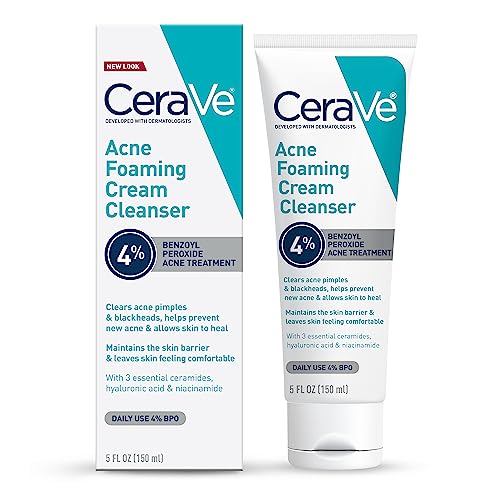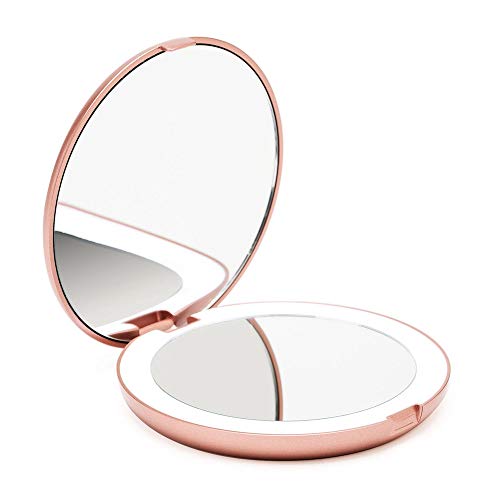
How to apply acne treatment cream effectively?
We understand how frustrating and self-conscious acne can make you feel. That’s why we want to help you effectively apply acne treatment cream. This step-by-step guide will give you clear instructions on how to use the cream to its fullest potential. By following these steps, you’ll be on your way to clearer, healthier skin and a boost in your confidence.
Top-selling acne treatment creams



Cleanse Your Face
- Wash your face with a gentle cleanser to remove any dirt, oil, and impurities.
- Use lukewarm water and pat dry with a clean towel.


Apply a Toner
- Start by cleansing your face with a gentle cleanser.
- Take a small amount of toner on a cotton pad.
- Gently swipe the cotton pad across your face, focusing on your T-zone and any areas prone to acne.
- Avoid applying too much pressure, as it may irritate the skin.
- Allow the toner to dry completely before applying any other products on your face.
- Follow up with your acne treatment cream or moisturizer.
- Use the toner twice daily, in the morning and evening, for best results.
- Remember to close the toner bottle tightly after use to prevent evaporation and maintain its effectiveness.
Spot Test
Before applying the acne treatment cream to your entire face, perform a spot test on a small area of your skin. This simple step is crucial to avoid any potential adverse reactions to the product.
- Choose a small, inconspicuous area on your skin, preferably on your jawline or the back of your hand.
- Cleanse and dry the chosen spot thoroughly.
- Take a small amount of the acne treatment cream and apply it to the spot.
- Gently massage the cream into the skin until it is fully absorbed.
- Leave the cream on the spot for at least 24 hours.
- During this period, avoid touching, scratching, or washing the spot.
- Observe the spot closely for any signs of redness, itching, irritation, or swelling.
- If you experience any adverse reactions, immediately wash off the cream and discontinue its use.
- If the spot remains unaffected after 24 hours, you can safely proceed with applying the acne treatment cream to your entire face.
Remember, conducting a spot test is a precautionary measure that ensures your skin’s safety and helps you achieve the desired results without any unwanted side effects.



Apply the Acne Treatment Cream
Apply the Acne Treatment Cream by taking a pea-sized amount and dotting it on your forehead, cheeks, chin, and nose. Gently massage the cream into your skin using your fingertips, paying special attention to areas with acne or breakouts.

Moisturize
After the acne treatment cream has absorbed, apply a moisturizer to hydrate your skin. This step is crucial as it helps replenish moisture and prevent dryness caused by the acne treatment. Look for a non-comedogenic moisturizer that won’t clog your pores, ensuring that it is specifically designed for acne-prone skin. Gently massage the moisturizer onto your face using upward motions, covering all areas until it is evenly distributed. Remember to extend the application to your neck and any other areas that may need hydration.
Protect with Sunscreen
Apply a generous amount of broad-spectrum sunscreen with an SPF of 30 or higher to all exposed areas of your skin. Make sure to cover your face, neck, arms, and any other areas that are not protected by clothing. Remember to reapply every two hours, especially if you are sweating or swimming, to maintain optimal protection against harmful UV rays. For example, when using an acne treatment cream, cleanse your face, pat it dry, and then apply a pea-sized amount of the cream. Wait for it to fully absorb into your skin, and then apply a layer of sunscreen to ensure your skin is shielded from the sun’s damaging effects.
Follow a Consistent Routine
- Apply the acne treatment cream consistently for optimal results.
- Follow the instructions provided on the product packaging for the recommended frequency of application.
- Ensure that you adhere to the prescribed routine to effectively combat acne and achieve desired outcomes.
Monitor Your Skin
- Observe how your skin reacts to the acne treatment cream.
- Stop using the cream and seek advice from a dermatologist if you notice any irritation or if your acne worsens.
Final thoughts on acne treatment
In conclusion, by implementing the proper techniques and steps outlined in this blog post, you can ensure the effective application of acne treatment cream. Consistency, patience, and attentiveness to your skin’s needs are key in achieving the desired improvement in your skin condition. So, start incorporating these tips into your daily skincare routine and enjoy clearer, healthier skin!
Essential Supplies






Effective Application Techniques
A Guide to Using Topical Acne Medication
Application Instructions for Acne Treatment Cream
- Cleanse your face thoroughly with a gentle cleanser and pat dry before applying the acne treatment cream
- Use a small amount of the cream and apply it directly to the affected areas of your skin. Avoid applying it to unaffected areas as it may cause dryness or irritation
- Gently massage the cream into your skin using circular motions, ensuring it is evenly distributed
- Allow the cream to absorb into your skin before applying any other skincare products or makeup
- Start by using the acne treatment cream once a day, preferably in the evening, and gradually increase the frequency as your skin tolerates it. Follow the instructions provided by the product manufacturer
- Avoid excessive sun exposure while using the cream as it can make your skin more sensitive to sunlight. If you need to go outside, apply sunscreen with a high SPF to protect your skin
- Be patient and consistent with the use of the acne treatment cream. Results may not be immediate, and it may take several weeks or even months to see significant improvements in your skin
Frequently Asked Questions about Acne Treatment Cream
Are there any specific instructions or precautions for using acne treatment cream?
Yes, there are specific instructions and precautions for using acne treatment creams. Here are some general guidelines:
- Cleanse your face: Before applying the acne treatment cream, wash your face with a gentle cleanser and pat it dry. This helps remove dirt, excess oil, and other impurities, allowing the cream to work effectively.
- Spot test: If you’re using the acne treatment cream for the first time, it is recommended to do a patch test on a small area of your skin to check for any adverse reactions or allergies. Wait at least 24 hours to ensure there are no negative effects before applying it to a larger area.
- Follow usage instructions: Read the label or packaging carefully to understand how to use the acne treatment cream. It may recommend applying a thin layer to the affected area once or twice a day. Do not exceed the recommended dosage unless advised by a healthcare professional.
- Avoid sensitive areas: Be cautious while applying acne treatment cream near the eyes, lips, or any other sensitive areas of the face. These areas are more prone to irritation. If accidental contact occurs, rinse with water immediately.
- Protect from sunlight: Some acne treatment creams may increase sun sensitivity, so it’s important to use sunscreen or avoid direct sun exposure while using them. This can help prevent sunburn and further skin damage.
- Moisturize if needed: Depending on the specific acne treatment cream, it can sometimes cause dryness or flakiness. If this occurs, you can use a non-comedogenic moisturizer to keep your skin hydrated without clogging the pores.
- Patience and consistency: Acne treatment creams often take time to show results. It’s essential to be patient and consistent with your usage. It may take several weeks or even months to see improvement in your acne condition.
How long does it usually take to see results from using acne treatment cream?
The time it takes to see results from using acne treatment cream can vary depending on several factors. Generally, it can take anywhere from 4 to 6 weeks to notice a visible improvement in acne symptoms. However, this timeline may differ based on the severity of the acne, the specific ingredients in the cream, and how consistently the treatment is applied. It’s important to follow the instructions provided with the cream and give it enough time to work before expecting noticeable results.
What is the recommended frequency of using acne treatment cream?
The recommended frequency of using acne treatment cream can vary depending on the specific product and the severity of the acne. Generally, it is advised to use acne treatment creams once or twice daily. However, it is important to follow the instructions provided by the manufacturer or consult with a dermatologist for personalized recommendations. Overuse or excessive application of acne treatment creams can potentially irritate the skin and worsen the condition.
What are the main ingredients in acne treatment cream?
The main ingredients in acne treatment creams typically include active substances such as benzoyl peroxide, salicylic acid, or sulfur. These ingredients work to unclog pores, reduce inflammation, fight bacteria, and promote skin cell turnover. Additionally, acne treatment creams may contain other ingredients like glycolic acid, retinoids, or tea tree oil, which can further aid in treating acne. It’s important to note that specific formulations may vary among different brands and products. Therefore, it is recommended to read the product label or consult a healthcare professional for more detailed information on the specific acne treatment cream you are using.
Are there any side effects or potential risks associated with using acne treatment cream?
Yes, there can be side effects and potential risks associated with using acne treatment cream. Some common side effects may include dryness, redness, itching, and peeling of the skin. In some cases, the skin may become more sensitive to sunlight, leading to increased risk of sunburn. Additionally, some people may experience allergic reactions or irritation to specific ingredients in the cream. It is important to check the label for any warnings or precautions and consult with a healthcare professional before using any acne treatment cream to minimize the risks and ensure its suitability for your skin.

Hey, I’m Ava Wilson—a skincare enthusiast and a certified esthetician. I’m dedicated to sharing my knowledge and empowering others to achieve healthy, glowing skin through simple, effective routines and natural remedies. Join me on this exciting skincare journey, and let’s unlock your skin’s potential for a confident, beautiful you.





